Craftmade Quest CQ52 Installation Instructions Manual
- Catégorie
- Ventilateurs ménagers
- Taper
- Installation Instructions Manual

P. O. Box 1037
650 S. Royal Lane, Suite 100
Coppell, TX 75019 EE.UU.
(800) 486- 4892
8:00 a 5:00 CST (Hora local central)
Número de fax sin cargo: (877) 304-1728
Correo electrónico: [email protected]
www. craftmade.com
®
MEJOR DISEÑO
®
UNE CONCEPTION EXCEPTIONNELLE
P. O. Box 1037
650 S. Royal Lane, Suite 100
Coppell, TX 75019 EE.UU.
de 8 heures à 17 heures (Heure standard du centre)
Numéro de télécopieur gratuit : (877) 304-1728
Email: [email protected]
www. craftmade.com
P. O. Box 1037
650 S. Royal Lane, Suite 100
Coppell, TX 75019
(800) 486-4892
8:00 to 5:00 CST (Central Standard Time)
Toll Free Fax: (877) 304-1728
email: [email protected]
www.craftmade.com
®
BETTER BY DESIGN
®
BETTER BY DESIGN
Installation Instructions
Models: CQ52
The Quest Fan
CQ52

Read and Save These Safety Precautions
1. Turn off electricity at main switch before wiring or servicing fan in order to avoid
possible electrical shock.
2. All wiring must be in accordance with the National Electric Code (ANSI/NFPA 70-
1999) and local electrical codes. Electrical installation should be performed by a qualified
licensed electrician.
3. After making the wire connections, the wires should be spread apart with the grounded
conductor and the equipment-grounding conductor on the one side of the outlet box
and the ungrounded conductor on the other side of the outlet box.
4. The splices after being made should be turned upward and pushed carefully up into
the outlet box.
5. Conductor of a fan identified as grounded conductor to be connected to grounded
conductor of power supply, conductor of a fan identified as ungrounded conductor to
be connected to an ungrounded conductor of power supply, conductor of fan identified
for equipment grounding to be connected to an equipment-grounding conductor.
6. Fan should not be mounted in an area where it might get wet.
7. To r educe the risk of fire, electric shock or personal injury, mount to outlet box marked
"Acceptable for Fan Support" and use mounting screws provide with the outlet box.
8. For safety and best operating results, we recommend that you have a qualified electrician
assemble and install your fan.
9. WARNING: To reduce the risk of fire or electric shock, do not use this fan with any
solid state speed control device.
10. To reduce the risk of personal injury, do not bend the blade brackets when installing
the brackets, balancing the blades or cleaning the fan. Do not insert foreign objects
in between rotating fan blades.
Before Assembly
1. Make sure that the fan voltage (120) is compatible with your own electrical system.
2. Check to make sure that your carton contains all the parts mentioned in the parts list.
NOTE: When the motor is taken out of carton, please put it in a soft cloth to prevent any
damage on the ornamental surface.
CAUTION: Before installing, choose a location for mounting the fan where the blades have
at least 7 feet of clearance from all objects and floor. Mount an outlet box to the ceiling or
use an existing box.
CAUTION: Do not mount fan to sheet rock or drywall type materials. To insure proper
support, use the two #1 wood screws to secure mounting bracket to joist or beam. If the
location you choose does not have a suitable support beam, install a 2”X4” brace between
ceiling joists to support.
Tools You Need
1. Phillips
Screwdriver
(included)
3. Adjustable
Wrench
2. Flat
Screwdriver
4. Wire Strippers
What You Have
PartsQuantity
1. Mounting Bracket 1
2. Down Rod Assembly 2
4" & 6" Rods Supplied
(Use desired length)
3. Canopy 1
4. Decorative Cover Cap 1
5. Fan Motor 1
6. Blades (sold separately) 5
7. Phillips Screwdriver 1
Destornillador Phillips 1
8. TCS Wall Control 1
9. Housing Clip 1
10. Foam Insert (top) 1
12
4
Screw Package Quantity
S1. Wood Screws and Washers 2
S2. Screws (for Canopy) 3
S3. Bracket Screws & Washers 2
S4. Blade Screws 16
S5. Wire Connectors 3
S6. Safety Bolt & Nut 1
S7. "J" Hook 1
S8. Zip Tie 1
7
3
5
6
109
OFF
12V BAT.
ON
HIGH
MED.
LOW
FAN OFF
L-1
L-2
REVERSE
8
S2
S1
S4
S3
S7 S8
S5
S6

Step 1
Turn off circuit breakers and wall switch to the fan
supply line leads.
Warning: Failure to disconnect power supply prior to
installation may result in serious injury or death.To reduce
the risk of shock, this fan must be installed with an
isolating wall control/switch.
1
Step 3
Check to make sure blades are at
least 30” from any obstruction.
Check downrod length to
ensure blades are at least
7' above the floor.
3
84”
(2.1m)
Min.
30”
0.75m
Min.
Preparation
Important: When using an existing outlet box, be sure the box is securely attached
to the building structure and can support the full weight of the fan. Failure to do
so can result in serious injury or death.
Step 2
Determine mounting method to use.
A. Downrod Mount
B. Angle Mount
Craftmade Part #45AD (see dealer)
2
IMPORTANT: If using the angle mount
method, check to make sure the ceiling angle
is not steeper than 35°. Angles greater than
35° will require a 45° angle adapter.
Downrod Installation
(Vaulted Ceilings)
Downrod Installation
(Normal Ceilings)
Step 4
Prior to securing mounting bracket, screw "J" hook (S7) into ceiling outlet
box as a secondary support means. Secure mounting bracket (#1) to the
outlet box (A) by tightening bracket screws & washers (S3) as shown. If
not mounting to an outlet box, use wood screws (S1) and washers (S3) and
mount securely to ceiling beam. Be sure at this point to insert canopy screws
(S2) in bracket.
NOTE: Do not mount directly to sheet rock or ceiling tile.
NOTE: J Hook installation is a Canadian requirement only.
4
OUTLET BOX
Outlet Box (A)
Mounting Bracket (1)
Bracket Screws
& Washers (S3)
Support Beam
Wood Screws (S1)
Canopy Screws (S2)
Ceiling
Wood Screws (S1)
“J” Hook (S7)

6
Step 6
Setting Frequency Switches
The wall control unit is operated by a set of frequency switches and are
preset at the factory. There are two sets of frequency switches. The switches
on the wall control are located on the front panel under the insert plate.
The switches on the fan unit are located in the receiving module on top of
the fan unit (see diagram). The switches can be set in any position as long
as both the wall unit and receiving module switches are set the same. All
(RF) modules & Transmitters come from the factory with the dip switches
set in the (ON) position. Reattach top motor housing (#5) with the four
screws taken out previously.
Note: In the event there are multiple remote units in an area, dip switches can be set to
different settings so one remote doesn't inadvertently turn on more than one fan.
1
2
34
O
N
1234
ON
OFF
12V BAT.
ON
HIGH
MED.
LOW
FAN OFF
L-1
L-2
REVERSE
1234
ON
6
Helpul Hint
Remove fan motor (#5) from inside the box, turn the top foam insert
(#10) upside down, then lay the fan motor face down into the foam.
This will hold the motor housing steady during assembly.
5
Step 5
Take out the four screws in the top motor housing (#5). Save the screws.
Raise the top motor housing (#5) off the base (see figure 1). Slide blade
(#6) through slot on side of fan. Attach with blade screws (S4) as shown
in figure 2. Repeat this procedure until all five blades are secured. Tighten
firmly. Top motor housing will be reattached in following step.
Figure 1
Motor Housing (#5)
Top Motor Housing (#5)
CAUTION: Never hold or lift fan by blades
Figure 2
Blade Screws (S4)
Top View

8
Step 8
Position downrod so the hole in the downrod aligns with the hole in
the flange coupling on the motor. Insert safety bolt (S6) through coupling
and downrod and attach nut. Tighten firmly. Tighten set screw "A"
against downrod. Connect antenna wire and place decorative cover (#4)
and canopy (#3) over downrod assembly. Replace hanging ball, insert
hanging pin through downrod and tighten set screw "C" in hanging ball
into downrod.
WARNING:
Failure to completely tighten downrod as described in steps 7 & 8 above could
result in the fan loosening and possibly falling.
IMPORTANT: Black antenna wire must be connected for fan to function.
Safety Bolt & Nut
Set Screw (A)
Canopy (3)
Motor Housing (5)
Set Screw (C)
Downrod (2)
Decor Cover (4)
Antenna Wire
Ground
Wire
Ball
Screw
Hanging
Pin
Hanging
Ball
Threaded
Set Screw Hole
Step 7
Locate downrod assembly (#2). Loosen ball screw on black hanging ball
to free lock pin. Black hanging ball will slide down. Remove ground
screw and green ground wire. Remove hanging ball from downrod and
save all parts. Insert fan wires through downrod. Screw downrod into
top of fan motor housing, being careful that wires are pulled through.
7
Hanging Ball
Lock Pin
Downrod
Ball Screw
Green Ground
Wire
Downrod
Assembly
(#2)
Fan Motor Housing

9
Step 9
For added security, attach safety cable from fan unit to "J" hook (S7) in
outlet box. Secure by looping zip tie (S8) through safety cable and "J" hook.
Tighten zip tie securely. Lift fan onto the mounting bracket (#1). Turn
housing until hanging ball seats itself into ball socket (listen for click).
NOTE: Parts furnished will allow
you to install your fan at up to a 35°
angle. Angles greater than 35° will
require a 45° angle adapter (see
dealer).
NOTE: J Hook installation is a
Canadian requirement only.
Outlet Box (A)
Support Beam
Ceiling
Green Ground Wire
“J” Hook (S7)
OUTLET BOX
“J” Hook (S7)
Safety Cable
Zip Tie (S8)
Mounting Bracket (#1)
WARNING: To reduce the risk of fire, electric shock or personal injury, mount
so outlet box marked "acceptable for fan support" and use mounting screws
provided with the outlet box. Most outlet boxes commonly used for the support
of lighting fixtures are not acceptable for fan support and may need to be replaced.
Consult a qualified electrician if in doubt.
Step 10
1. Connect fan wires to ceiling wires: white fan wire to white outlet wire,
black to black and green to green. Wire connectors (S5) are provided for
your convenience. If an additional blue wire is present then also connect the
blue wire to the black wire. (Optional light kit may be wired to individual
wall switches, if desired.)
2. After connections
are made, turn
splices upward
and push carefully
into outlet box.
Separate blue and
black wires on one
side of the box, and
white and green wires
on the other side.
There are 3 colored
wires coming from the
top of the motor
(including ground wire).
10
White (Neutral)
Ground
White
Black
Wire
Connectors
(S5)
Ground
(Green)
Black (Power)
Downrod Ground
(Green)
Mounting Bracket
Ground (Green)
Outlet Box
Ground (Green)
Wire Connnections
Outlet Box Fan wires
Black Black
(Hot wire for fan)
Green Green (Ground wire)
White White (Neutral wire)

13
Step 13
Wiring Instructions
NOTE: Use instructions packed with celing fan to wire ceiling fan.
WARNING: To avoid overheating and possible damage to his device and
other equipment, do not install to control a receptacle, fluorescent lighting,
transformer, or motor-operated appliance other than the fans for which
this control is intended. Use this device only with copper or copper clad
wire. With aluminum wire use only devices marked CO/ALR.
1. Remove insulation to expose 3/4" bare copper wire at end of circuit
conductors. Keep wire ends straight.
2. Connect wires per wiring diagram as follows: black leads (one each)
to black (hot) line, green ground wire to copper outlet wire. Hold
bare ends together. Push wires firmly into wire connector. Screw
connector on clockwise until no bare copper shows. Secure connector
with electrical tape.
CAUTION: Never attach white neutral wire to TCS+ Control
3. Make sure battery is properly installed in switch. The switch should
already have this preinstalled, but double check before installing the
mounting plate (see diagram). Note: The battery replacement code is
23A 12Volt.
4. Mount device with long mounting screws (provided). Install wallplate
and tighten cover screws.
5. Restore power at circuit breaker or fuse. Installation is complete.
Neutral
(White Wire)
Hot Line
(Black Wire)
SINGLE POLE
Neutral
(White Wire)
Load
(Black Wire)
23A 12Volt
Battery
HI
MED
LOW
OFF
L-1
L-2
REV
OFF
ON
12V. BATT.
SUPER
23A 12V
1234
ON
Ground Wire
(Copper Wire)
Ground Wire
(Green Wire)
11
Step 11
Attach canopy (#3) to the
mounting bracket by placing
screws (S2) into slot in canopy.
Twist clockwise to lock
into place. Tighten screws firmly.
Bottom of Canopy
Screws (S2)
Canopy (3)
Ceiling
12
Step 12
Install halogen light bulb into fan. Seat bulb firmly into socket as shown.
Then install glass by raising glass to fan and turning glass clockwise
until firmly seated.
Halogen Bulb

Housing Clip (#9)
Motor Housing Access
To access motor housing, take out the four screws in the top motor housing
(#8). Save the screws. Raise the top motor housing and decor cover cap up
the downrod. Secure both pieces by attaching the housing clip (#9)
underneath the top motor housing by clipping it on and tightening the set
screw. This will give access to the blade assembly area.
14
Electrical Connections
Connect black fan wires to black outlet wire. Connect white fan wire to
white outlet wire and green grounding lead wire from the grounding
conductor to the supply circuit (see figure A). Use wire connectors provided
with your fan. No loose strands or loose connections should be present.
Turn splices upward and carefully push all wiring into outlet box. When
wall switches are employed, switches should be UL listed for use with
ceiling fan.
Fan and lights
controlled by remote
control unit.
Ground
Black
White
Black
White
Green
CAUTION: Always turn off power at breaker before attempting any wire
connections.

Operation Instructions
ON/OFF For emergency shut off.
HIGH Controls fan motor speed. To select desired speed,
MEDIUM press button once and release
LOW
REVERSE Controls direction of fan blades. To reverse fan blades, press once and
release.
FAN OFF Tu rns fan motor speed off. Press once to turn off. To start motor speed
again, hit one of the motor speed buttons.
L-1 Controls no function on this fan.
L-2 Controls the on/off and intensity for integrated light kit. Push and
release for on/off function. Hold down for full range light dimming.
NOTE: The "High", "Medium" or "Low" buttons may be used to start the fan
motor. The speed of the fan may be changed at any time.
Common Problems
Problem A: Fan Will not Start
Remedies: 1. Check fuse or circuit breaker and replace if necessary
2. Turn off electrical power and check all wire connectors.
3. Check on/off TCS and wall control selector switch. See operation
instructions.
Problem B: Fan is Excessively Noisy
Remedies: 1. Check that all screws in fan assembly are tight and properly seated.
2. Check to make sure mounting bracket is installed properly.
3. Check to make sure light kit and glass reinstalled properly and tight.
4. If wall control is used, insure the wall control is not a transformer or a
variable speed type.
Problem C: Fan Wobbles
Remedies: 1. Check that all blades are screwed firmly into blade holders.
2. Check that all blade holders are screwed firmly into motor.
3. Check the weight of blades. All our blades are weighed on electronic scales.
The weight is marked on the reverse side of the fan blade near the motor
end. All of the blades should be the same weight to prevent fan from
wobbling.
4. A balancing kit is enclosed if needed.
Weight: The weight of the complete fan, including assembly hardware is 36 lbs.
®
MEJOR DISEÑO
Instrucciones de instalación
Modelos: CQ52
Ventiladore de
Quest
CQ52

Lea y conserve estas precauciones de seguridad
1. Apague la electricidad con el interruptor principal antes de cablear o dar servicio al
ventilador para evitar posibles choques eléctricos.
2. Todo el cableado eléctrico debe acatar los códigos eléctricos nacionales (ANSI/NFPA
70-1999) y los códigos eléctricos locales. Un electricista capacitado debe realizar la
instalación eléctrica.
3. Después de realizar las conexiones de cableado, deben separarse los cables con el
conductor a tierra y el conductor de tierra del equipo en un lado de la caja de salida y
el conductor sin tierra al otro lado de la caja de salida.
4. Una vez efectuados los empalmes deben girarse hacia arriba y empujarse con cuidado
dentro de la caja de salida.
5. El conductor de un ventilador identificado como conductor a tierra debe conectarse
al conductor a tierra de un suministro de alimentación, el conductor de un ventilador
identificado como conductor sin tierra debe conectarse a un conductor sin tierra del
suministro de alimentación; el conductor de un ventilador identificado para conectar
a tierra el equipo debe conectarse a un conductor para tal efecto.
6. No debe montarse el ventilador en un área donde pueda mojarse
7. Para aminorar el riesgo de un incendio, choque eléctrico o lesión personal, móntelo a
una caja de salida adecuada para soportar el ventilador ("Acceptable for Fan Support")
y utilice los tornillos de montaje incluidos con la caja de salida.
8. Por motivos de seguridad y para obtener óptimos resultados, recomendamos que pida
a un electricista capacitado ensamblar e instalar el ventilador.
9. ADVERTENCIA: Para reducir el peligro de incendio o choque eléctrico, no use este
ventilador con ningún dispositivo de control de velocidad de estado sólido.
10. Para aminorar el riesgo de una lesión personal, no doble los soportes de las aspas al
instalar los soportes, equilibrar las aspas o limpiar el ventilador. No introduzca objetos
extraños entre las aspas giratorias del ventilador.
36
Herramientas necesarias
1. Destornillador
Phillips
(incluido)
3. Llava
ajustable
2. Destornillador
de hoja plana
4. Pelacables
Antes del montaje
1. Revise que el voltaje (120) del ventilador sea compatible con su propio sistema eléctrico.
2. Compruebe que la caja contenga todas las piezas mencionadas en la lista correspondiente.
NOTA: Cuando se extraiga el motor de la caja, póngalo sobre un paño suave para evitar
dañar la superficie ornamental.
PRECAUCIÓN: Antes de instalar, elija una ubicación para montar el ventilador donde las
aspas tengan por lo menos 7 pies (2.1 m) de altura desde el piso y todo objeto. Monte una
caja de salida en el cielo raso o use una caja existente.
PRECAUCIÓN: No monte el ventilador en materiales de tipo tablaroca o paneles de yeso.
Para asegurar un soporte adecuado use los dos tornillos para madera (1) para asegurar el
soporte de montaje a la viga. Si la ubicación que ha seleccionado no tiene una viga de soporte
que sirva, instale una abrazadera de 2" x 4" (5 x 10 cm) entre las vigas del cielo raso para
soportar el ventilador.
Componentes Incluidos
Piezas Cantidad
1. Soporte de montaje 1
2. Ensamblaje de vara hacia 2
abajo, se suministra vara
de 2 y 6 pulg. (5 y 15 cm)
(Use el largo deseado)
3. Cúpula 1
4. Tapa decorativa de la cubierta 1
5. Motor del ventilador 1
6. Aspas (se venden por separado) 5
7. Destornillador Phillips 1
8. Control de la pared TCS 1
9. Grapa de la caja 1
10. Inserto de espuma (parte superior) 1
12
4
Paquete de herraje Cantidad
S1. Tornillos para madera y arandela 2
S2. Tornillos (para la cúpula) 3
S3. Tornillos de soporte y arandela 2
S4. Tornillos de las aspas 16
S5. Conectores de cables 3
S6. Perno y tuerca de seguridad 1
S7. El Cancho "J" 1
S8. Amarra 1
7
3
5
6
109
OFF
12V BAT.
ON
HIGH
MED.
LOW
FAN OFF
L-1
L-2
REVERSE
8
S2
S1
S4
S3
S7 S8
S5
S6

Paso 1
Apague los disyuntores y el interruptor de la pared hacia
los conductores de suministro del ventilador.
Advertencia: Si no se desconecta el suministro de alimentación
antes de la instalación puede ocasionar lesiones graves o fatales.
Este ventilador debe instalarse con un interruptor/control
aislante de pared para reducir el riesgo de electrochoque.
1
Preparación
Importante: Al utilizar una caja de salida existente, revise que la caja esté conectada
firmemente a la estructura de la edificación y que pueda soportar el peso total del
ventilador. De lo contrario puede ocasionar lesiones graves o fatales.
Paso 3
Revise que las aspas queden por lo
menos a 30” (76 cm) de toda
obstrucción. Compruebe la
longitud de la vara hacia abajo
para que las aspas queden por
lo menos a 7 pies (2 metros) del piso.
3
84 pulg
(2.1m)
Mín.
30 pulg
0.75m
Mín.
Paso 2
Determine el método de montaje a usar.
A. Montaje con vara hacia abajo
B. Montaje angular
Pieza Craftmade 45AD
(consulte al distribuidor)
2
IMPORTANTE: Si utiliza el método de montaje
angular, revise que el ángulo del cielo raso no supere
los 35°. Los ángulos mayores de 35° necesitarán un
adaptador angular de 45°.
Instalación con vara hacia abajo
(cielos rasos abovedados)
Instalación con vara hacia abajo
(cielos rasos normales)
Paso 4
Antes de sujetar el soporte de montaje, atornille el gancho “J” (S7) en la caja de
salida del techo como medio de soporte secundario. Asegure el soporte de montaje
(1) a la caja de salida (A) apretando los tornillos del soporte y las arandelas (S3)
como se muestra. Si no se monta en una caja de salida, use tornillos para madera
(S1) y arandelas (S3), montando firmemente en una viga del cielo raso. En este
punto deben insertarse los tornillos de cúpula (S2) en el soporte.
NOTA: No monte directamente en paneles de yeso o láminas de techo.
NOTA:
La instalación del Gancho J es un requisito canadiense sólo.
4
OUTLET BOX
Caja de salida (A)
Soporte de montaje (1)
Tornillos de soporte
y arandelas (S3)
Viga de soporte
Tornillos para madera (S1)
Tornillos para
la cúpula (S2)
Cielo raso
Tornillos para madera (S1)
CAJA DE SALIDA
Gancho “J”(S7)

6
Paso 6
Ajuste de los interruptores de frecuencia
Un conjunto de interruptores de frecuencia preajustados de fábrica operan la
unidad de control para la pared. Hay dos conjuntos de interruptores de frecuencia.
Los interruptores del control de pared están situados en el panel delantero, debajo
de la placa de inserción. Los interruptores del ventilador están situados en el
módulo receptor sobre el ventilador (consulte el diagrama). Los interruptores
pueden colocarse en cualquier posición, siempre que sea la misma posición tanto
para el interruptor de la unidad para la pared como el interruptor del módulo
receptor. Todos los transmisores y módulos (RF) vienen de la fábrica con los
interruptores “DIP” colocados en la posición de ENCENDIDO (ON). Vuelva
a unir la parte superior de la caja del motor (#5) utilizando los cuatro tornillos
que previamente sacó y puso al lado.
Nota: En caso de haber varias unidades de control remoto en un lugar, los interruptores "DIP"
pueden ajustarse de manera distinta para que un control remoto no encienda accidentalmente
más de un ventilador.
12
34
O
N
1234
ON
OFF
12V BAT.
ON
HIGH
MED.
LOW
FAN OFF
L-1
L-2
REVERSE
1234
ON
5
Paso 5
Saque los cuatro tornillos que se encuentran en la parte superior de la caja
del motor (#5). Póngalos a un lado. Luego, levante la caja superior del motor
(#5) de la base (vea la figura 1). Deslice la aspa (#6) a través de la ranura
situada al lado del ventilador. Fije con los tornillos de las aspas (S4) como
lo muestra la figura 2. Repita este procedimieno hasta haber fijado todas las
cinco aspas. Atornille firmemente. En el siguiente paso, usted volverá a unir
la parte superior de la caja del motor.
Una recomendación útil
Saque el motor del ventilador (#5) del interior de la caja del empaque,
voltee el inserto de espuma (#10) al revés, luego coloque el motor del ventilador
cara abajo sobre la espuma. Esto le permitirá mantener estable la caja del
motor durante el ensamblaje.
Figura 1
Motor del ventilador (#5)
Parte superior de la caja del motor (#5)
Figura 2
Tornillos de las aspas (S4)
PRECAUCIÓN: Nunca levante o detenga el ventilador por las aspas.
Top View

8
Paso 8
Sitúe la vara hacia abajo de manera que el agujero en la misma quede alineado
con el agujero en el acoplamiento del motor. Inserte el perno de seguridad (S6)
en el acoplamiento y la vara hacia abajo e instale la tuerca. Apriete bien.
Apriete el tornillo de fijación “A” contra la vara hacia abajo. Conecte el cable
de la antena y coloque la cubierta decorativa (#4) y la cúpula (#3) sobre el
ensamblaje de la vara hacia abajo. Reinstale la bola colgante, inserte el pasador
colgante en la vara hacia abajo y apriete el tornillo de fijación “C” en la bola
colgante al interior de la vara hacia abajo.
ADVERTENCIA:
Si no se aprieta totalmente la vara hacia abajo como se describe en los pasos 7 y 8
anteriores podría soltarse y tal vez caerse el ventilador.
IMPORTANTE: El cable de antena negro debe estar conectado para que el
ventilador funcione.
Perno y tuerca
de seguridad
Tornillo de fijación (A)
Cúpula (3)
Caja del motor (5)
Tornillo de fijación (C)
Vara hacia abajo (2)
Cubierta decorativa (4)
Cable de antena
Cable
a tierra
Tornillo
de bola
Pasador
colgante
Bola
colgante
Agujero para
tornillo de
fijación
roscado
Paso 7
Ubique el ensamblaje de la vara hacia abajo (2). Suelte el tornillo de la
bola negra colgante para liberar el pasador de bloqueo. La bola negra colgante
se deslizará hacia abajo. Retire el tornillo a tierra y el cable a tierra de color
verde. Retire la bola colgante de la vara hacia abajo y guarde todas las piezas.
Inserte los cables del ventilador por la vara hacia abajo. Atornille la vara
hacia abajo en el extremo superior de la caja del motor del ventilador,
teniendo cuidado que hayan pasado los cables.
7
Bola colgante
Pasador de bloqueo
Vara hacia abajo
Tornillo de bola
Cable verde
a tierra
Ensamblaje
de la vara
hacia abajo
(2)
Caja del motor del ventilador

6
9
Paso 9
Para mayor seguridad, instale un lazo de alambre de acero desde el ventilador
al gancho “J” (S7) en la caja de salida. Sujételo pasando la amarra (S8) por
el cable de seguridad y el gancho “J”. Apriete bien la amarra. Levante el
ventilador hacia el soporte de montaje (1). Gire la caja hasta que la bola
colgante se asiente en el hueco de la bola (se debe escuchar un chasquido).
NOTA: Las piezas suministradas le permitirán instalar el ventilador en un ángulo de hasta
35°. Los ángulos mayores de 35° necesitarán un adaptador angular de 45°
(consulte con el proveedor).
NOTA: La instalación del Gancho J es un requisito canadiense sólo.
ADVERTENCIA: Móntelo en la caja de salida marcada “acceptable for fan support”
(aceptable como soporte del ventilador) con los tornillos suministrados con la caja para
reducir el riesgo de incendio o lesiones personales. La mayoría de las cajas de salida
de uso común para el soporte de portalámparas no son aceptables para el soporte del
ventilador y podría ser necesario reemplazarlas. Consulte con un electricista competente
en caso de dudas
CAJA DE SALIDA
Gancho “J” (S7)
Cable de seguridad
Amarra
(S8)
Caja de salida (A)
Viga de soporte
Cielo raso
Soporte de montaje (1)
Cable verde a tierra
Gancho “J” (S7)
Paso 10
1. Conecte los cables del ventilador a los del techo: el cable blanco del ventilador
con el cable blanco de salida, negro con negro y verde con verde. Se incluyen los
conectores de cables (S5) para su conveniencia. Si hay un cable azul adicional,
conéctelo también con el cable negro. (El paquete de iluminación opcional puede
cablearse a interruptores individuales de pared, si se prefiere.)
2. Después de efectuar las
conexiones, gire los empalmes
hacia arriba y empújelos
con cuidado dentro
de la caja de salida.
Separe los cables
azul y negro
en un lado de la
caja y los cables blanco y
verde en el otro lado.
Hay 3 cables de colores
que salen de la parte
superior del motor
(incluido el cable a tierra).
10
Blanco (Neutro)
Tierra
Blanco
Negro
Conectores
de cables
(S5)
Tierra
(Verde)
Negro (Alimentación)
Tierra de la vara
hacia abajo (Verde)
Tierra del soporte
de montaje (Verde)
Tierra de la caja
de salida (Verde)
Conexiones de cables
Caja de salida Cables del ventilador
Negro Negro (Cable energizado
para el ventilador)
Verde Verde (Cable a tierra)
Blanco Blanco (Cable neutro)

13
Paso 13
Instrucciones de cableado
NOTA: Siga las instrucciones incluidas con el ventilador de techo para cablearlo.
ADVERTENCIA: Para evitar el recalentamiento y posible daño a este dispositivo
y otro equipo, no lo instale para controlar un tomacorriente, luces fluorescentes,
transformador o electrodoméstico a motor, excepto por los ventiladores para los
cuales se diseñó este control. Use este dispositivo con alambre de cobre o revestido
en cobre únicamente. Con alambre de aluminio, use dispositivos marcados
CO/ALR únicamente.
1. Quite el aislamiento para exponer el alambre de cobre de _ pulg. al extremo
de los conductores del circuito. Mantenga rectos los extremos de los cables.
2. 2. Conecte los cables según el diagrama de cableado de la siguiente manera:
las terminales negras (cada una de ellas) a la línea negra (energizada),
el cable verde a tierra al cable de cobre de salida. Una los extremos desnudos.
Empuje firmemente los cables en el conector. Atornille el conector de tornillo
en sentido horario hasta que no quede cobre desnudo a la vista. Afiance
el conector con cinta aislante.
PRECAUCIÓN: Nunca conecte el cable neutro blanco al Control TCS+
3. Asegúrese de que la pila esté instalada correctamente en el interruptor.
Ésta ya debería estar instalada en el interruptor, pero confírmelo antes de
instalar la placa de montaje (ver diagrama). Nota: El código de reemplazo
de la pila es 23 A, 12 Voltios.
4. Monte el dispositivo con los tornillos largos de montaje (incluidos). Instale
la placa para la pared y apriete los tornillos de la cubierta.
5. Restaure el suministro eléctrico en el cortacircuitos o fusible. Esto completa
la instalación.
Neutro
(Cable blanco)
Carga
(Cable negro)
MONOPOLAR
Línea
energizada
(Cable negro)
Pila de 23 A
y 12 Voltios
Neutro
(Cable blanco)
HI
MED
LOW
OFF
L-1
L-2
REV
OFF
ON
12V. BATT.
SUPER
23A 12V
1234
ON
Cable Tierre
(Cable Verde)
Cable Tierre
(Cable Cobre)
12
Paso 12
Instale el bombillo eléctrico halógeno en el ventilador. Asiente el bombillo
firmemente en el encaje, según se ve en el diagrama. Instale luego la tapa de
vidrio, alzándolo hasta el ventilador y girándolo en el sentido de las
manecillas del reloj, hasta que este firmemente asentado.
Bombillo de Halógeno
11
Paso 11
Instale la cúpula (3) en el soporte
de montaje colocando los tornillos
(S2) en la ranura de la cúpula.
Gire en el sentido de las manecillas
del reloj para bloquearla en su sitio.
Apriete los tornillos firmemente.
Parte inferior de la cúpula
Tornillos (S2)
Cúpula (3)
Cielo raso

14
Conexiones eléctricas
Conecte los cables negros del ventilador al cable negro de salida. Conecte el
cable blanco del ventilador al cable blanco de salida y al cable conductor a
tierra verde desde el conductor a tierra al circuito de suministro (consulte la
figura A). Utilice los conectores de cable suministrados con el ventilador. No
debe haber hilos sueltos ni conexiones sueltas. Gire los empalmes hacia arriba
y empuje con cuidado todas las conexiones dentro de la caja de salida. Cuando
se empleen interruptores de pared, estos deben ser aprobados por UL para uso
con un ventilador de techo.
Tierra
Negro
Blanco
Negro
Blanco
Verde
Ventilador y luces
controlados por la
unidad de control
remoto.
PRECAUCIÓN: Siempre apague la corriente en el cortacircuitos antes de
intentar conectar los cables.
Housing Clip (#9)
Grapa de la caja (#9)
Cómo llegar a la caja del motor
Para llegar a la caja del motor, saque los cuatro tornillos de la parte superior
de la caja del motor (#8). Ponga estos tornillos a un lado. Levante la parte
superior de la caja del motor y la tapa decorativa de la cubierta de la vara hacia
abajo. Fije ambas piezas con la grapa de la caja (#9) uniéndola a la vara por
debajo de la parte superior de la caja del motor sujetándola y apretando el
tornillo de fijación. Esto le permitirá llegar al eansamblaje de las aspas.

ENCENDIDO/APAGADO Para un paro de emergencia.
ALTO Controla la velocidad del motor del ventilador Oprima el botón una
MEDIO vez y suéltelo para seleccionar la velocidad deseada
BAJO
REVERSA Controla de dirección de las aspas del ventilador. Oprima una vez y suéltelo
para invertir la dirección de las aspas del ventilador.
VENTILADOR Apaga el motor del ventilador. Oprima una vez para apagar.
APAGADO Para arrancar nuevamente el motor, oprima uno de los botones
de velocidad del motor.
L-1 No controla ninguna función en este ventilador.
L-2 Controla la función de encendido y apagado (on/off) así como la intensidad
para el juego integrado de luz. Para encender y apagar, empuje y suelte; para
reducir toda la gama de luz, mantenga empujado hacia abajo.
NOTA: Los botones “Alto”, “Medio” o “Bajo” pueden usarse para arrancar el motor
del ventilador. La velocidad del ventilador puede cambiarse en cualquier
momento.
Problemas Comunes
Problema A: El ventilador no arranca
Soluciones: 1. Revise el fusible o disyuntor y cámbielo si es necesario.
2. Apague la alimentación eléctrica y revise todos los conectores de cables.
3. Inspeccione el interruptor TCS de encendido / apagado y el interruptor
selector de control para la pared. Consulte las instrucciones de
funcionamiento.
Problema B: El ventilador es demasiado ruidoso
Soluciones: 1. Revise que estén apretados y debidamente asentados todos los tornillos
del ensamblaje del ventilador.
2. Compruebe que el soporte de montaje esté instalado correctamente.
3. Compruebe que la unidad de luz y el vidrio estén correctamente instalados
y apretados.
4. Si se usa el control de pared, revise que no sea del tipo transformador o
de velocidad variable.
Problema C: El ventilador se balancea
Soluciones: 1. Revise que todas las aspas estén atornilladas firmemente en sus soportes.
2. Revise que todos los soportes de las aspas estén atornilladas firmemente
en el motor.
3. Revise el peso de las aspas. Todas nuestras aspas se pesan en balanzas
electrónicas. El peso aparece en el reverso del aspa cerca del extremo del
motor. Todas las aspas deben tener el mismo peso para evitar que el
ventilador se balancee.
4. Se adjunta un paquete de balanceo, si es necesario.
Peso: El peso del ventilador completo, incluido el herraje de montaje es de
36 lbs. (16.3 kg).
Ventilateurs de
plafond Quest
Instructions d’installation
Modèle : CQ52
®
UNE CONCEPTION EXCEPTIONNELLE
CQ52

Veuillez lire et conserver ces consignes de sécurité
1. Pour éviter de vous électrocuter, débranchez l'alimentation électrique au niveau de
l'interrupteur principal avant de procéder au câblage ou à l'entretien du ventilateur.
2. Tout le câblage doit être effectué en accord avec le code électrique national américain
(ANSI/NFPA 70-1999) et les codes électriques locaux. L'installation électrique doit être
effectuée par un électricien professionnel qualifié.
3. Une fois que les connexions ont été effectuées, les fils doivent être séparés. Le conducteur
mis à la masse et le conducteur de mise à la masse de l'équipement doivent être mis d'un
côté de la boîte de sortie et le conducteur non mis à la masse de l'autre côté.
4. Une fois qu'elles ont été faites, les épissures doivent être tournées vers le haut et les fils
doivent être soigneusement rentrés dans la boîte de sortie.
5. Le conducteur mis à la masse du ventilateur doit être branché sur le conducteur mis à la
masse de l'alimentation électrique, et le conducteur non mis à la masse du ventilateur doit
être branché sur le conducteur non mis à la masse de l'alimentation électrique. Le
conducteur du ventilateur destiné à la mise à la masse de l'équipement doit être connecté
à un conducteur de mise à la masse de l'équipement.
6. Le ventilateur ne peut être installé dans un endroit où il pourrait être mouillé.
7. Pour éviter les incendies, les décharges électriques ou les blessures, branchez le ventilateur
sur une boîte de sortie marquée « Prise en charge de ventilateur » et utilisez les vis de
montage fournies avec la boîte de sortie.
8. Par mesure de sécurité et pour obtenir les meilleurs résultats possibles, nous vous conseillons
de faire assembler et installer votre ventilateur par un électricien professionnel.
9. ATTENTION : pour éviter les incendies ou les décharges électriques, n'utilisez jamais
ce ventilateur avec un dispositif de contrôle de la vitesse à l’état solide.
10. Pour éviter de vous blesser, ne pliez jamais les supports de pales lorsque vous les installez,
les équilibrez ou que vous nettoyez le ventilateur. N'insérez jamais d'objet entre les pales
en mouvement du ventilateur.
Avant l'assemblage
1. Vérifiez que la tension du ventilateur (120) est compatible avec votre système électrique.
2. Assurez-vous que le carton d'emballage contient toutes les pièces mentionnées dans la
liste des pièces.
REMARQUE : une fois le moteur déballé, placez-le sur un tissu doux pour éviter que sa
surface décorée ne soit endommagée.
ATTENTION : avant de procéder à l'installation du ventilateur, choisissez un endroit où
ses pales seront à une distance d'au moins 2 m (7 pi) de tout objet environnant et du sol.
Installez une boîte de sortie au plafond ou bien utilisez une boîte existante.
ATTENTION : n'installez pas le ventilateur sur des cloisons sèches ou du plâtre. Pour que
l'appareil soit correctement fixé, accrochez les supports de montage à une poutrelle ou à une
poutre au moyen des deux vis à bois n° 1. Si l'emplacement choisi n'a pas de poutre de
soutien acceptable, installez une armature de 2 po X 4 po entre les poutrelles du plafond
pour y accrocher le ventilateur
Outils nécessaires à l'installation
1. Tournevis
Phillips
3. Clé réglable
2. Tournevis plat
4. Pince à dénuder
Composants inclus
Pièces Quantité
1. Support de montage 1
2. Assemblage de la tige de suspension
Tige de 15 cm (6 po) fournie
(Utilisez la longueur désirée) 1
3. Coupelle 1
4. Couvre-bride 1
5. Boîtier du ventilateur et du moteur 1
6. Pales (vendues séparément) 5
7. Tournevis Phillips 1
8. TCS Interrupteur mural 1
9. Clip de maintien du boîtier 1
10. Bande de mousse (supérieure) 1
12
4
Paquet de vis Quantité
S1. Vis à bois 2
S2. Vis (pour coupelle) 3
S3. Vis et rondelles des supports 2
S4. Vis des pales 16
S5. Connecteurs de fils 3
S6. Boulon et écrou de sécurité 1
S7. Crochet en « J » 1
S8. Bride 1
7
3
5
6
109
OFF
12V BAT.
ON
HIGH
MED.
LOW
FAN OFF
L-1
L-2
REVERSE
8
S2
S1
S4
S3
S7 S8
S5
S6

Étape 3
Assurez-vous que les pales du
ventilateur sont à 75 cm (30 po)
minimum de toute obstruction.
Mesurez la tige de suspension
pour vous assurer que les pales
sont à au moins 2 mètres
(7 pi) du sol.
3
2,1 m
(84 po)
min.
0,75 m
(30 po)
min.
Préparation
Important: lorsque vous utilisez une boîte de sortie existante, assurez-vous que
cette dernière est correctement attachée à la structure du bâtiment et qu’elle peut
soutenir le poids total du ventilateur. Le non-respect de cette consigne peut entraîner
de graves blessures, voire la mort.
Étape 1
Désactivez les disjoncteurs et l'interrupteur mural
régissant les conducteurs d'alimentation du ventilateur.
Avertissement: le non débranchement de l'alimentation
électrique avant l'installation du ventilateur peut entraîner
de graves blessures, voire la mort. Pour éviter les décharges
électriques, ce ventilateur doit être installé avec un interrupteur
mural isolant.
1
Étape 2
Choisissez la méthode de montage que
vous désirez utiliser.
A. Montage à l’aide d’une tige de
suspension
B. Montage sur une surface inclinée
Pièce Craftmade n°45AD
(consultez votre revendeur)
2
IMPORTANT: si vous utilisez la méthode de
montage inclinée, vérifiez que l'angle du plafond
est inférieur à 35°. Si votre plafond est incliné
à un angle supérieur à 35°, vous devrez utiliser
un adaptateur d’angle à 45°
Montage à l’aide d’une tige de suspension
(Plafond en pente)
Montage à l’aide d’une tige de suspension
(Plafonds normaux)
Étape 4
Avant de fixer le support de montage, vissez le crochet en «J» (S7) sur la
boîte de sortie du plafond, pour qu’il serve de dispositif de soutien
supplémentaire. Fixez le support de montage (n° 1) à la boîte de sortie (A)
en resserrant les vis et les rondelles (S3) de support de la manière illustrée.
Si vous n'installez pas le ventilateur sur une boîte de sortie, utilisez les vis
à bois (S1) et les rondelles (S3) pour installer solidement l'appareil à une
poutre du plafond. N'oubliez pas d'insérer les vis de la coupelle (S2) dans
le support.
REMARQUE : n'installez pas le ventilateur directement sur du plâtre ou sur des carreaux
de plafond.
REMARQUE : L'installation du crochet en J est une exigence canadienne seulement.
4
OUTLET BOX
Boîte de sortie (A)
Supports de montage (1)
Vis et rondelles
des supports (S3)
Poutre de soutien
Vis à bois (S1)
Vis de coupelle (S2)
Plafond
Vis à bois (S1)
Crochet en « J » (S7)

Conseil
Retirez le moteur du ventilateur (nº 5) du boîtier, retournez la bande de
mousse supérieure à l'envers (nº 10), puis posez le moteur du ventilateur,
à l'envers, sur la mousse. Cela permettra de maintenir le boîtier du moteur
en place pendant le montage.
5
Étape 5
Retirez les quatre (4) vis sur le haut du boîtier du moteur (nº 5). Conservez
ces vis. Soulevez le haut du boîtier du moteur (nº 5) de la base (voir la figure
1). Faites glisser les pales (nº 6) dans les fentes situées sur le côté du ventilateur.
Fixez les pales à l'aide des vis prévues à cet effet (S4), comme l'indique la
figure 2. Répétez cette procédure jusqu'à ce que les cinq pales soient bien
mises en place. Serrez fermement. Le haut du boîtier du moteur sera remis
en place à l'étape suivante.
Figure 1
Boîtier du moteur (nº 5)
Haut du boîtier du moteur (nº 5)
Figure 2
Vis de pale (S4)
Vue supérieure
ATTENTION : Ne jamais tenir ou soulever le
ventilateur par les pales.
6
Étape 6
Réglage des interrupteurs à fréquence
L'unité de commande murale fonctionne grâce à un ensemble d'interrupteurs
à fréquence qui sont préréglés en usine. Il existe deux ensembles d'interrupteurs
à fréquence. Les interrupteurs sur la commande murale se situent sur le
panneau frontal, sous la plaque. Les interrupteurs sur le ventilateur se situent
sur le module de réception placé sur le haut du ventilateur (voir schéma).
Les interrupteurs peuvent être réglés sur n'importe quelle position, à
condition toutefois que les interrupteurs de l'unité murale et du module
de réception soient positionnés sur les mêmes réglages. Tous les modules
(RF) et émetteurs sont livrés de l'usine avec les commutateurs DIP réglés
en position ON (Marche). Remettez le haut du boîtier du moteur en place
(nº 5) à l'aide des quatre vis retirées précédemment.
Remarque : Dans le cas où il y aurait plusieurs unités radiocommandées dans une zone,
des commutateurs DIP peuvent être réglés sur différents réglages de façon à ce qu'une
unité n'interfère pas avec les autres ventilateurs et ne les mette pas en marche par inadvertance.
12
34
O
N
1234
ON
OFF
12V BAT.
ON
HIGH
MED.
LOW
FAN OFF
L-1
L-2
REVERSE
1234
ON
La page est en cours de chargement...
La page est en cours de chargement...
La page est en cours de chargement...
La page est en cours de chargement...
-
 1
1
-
 2
2
-
 3
3
-
 4
4
-
 5
5
-
 6
6
-
 7
7
-
 8
8
-
 9
9
-
 10
10
-
 11
11
-
 12
12
-
 13
13
-
 14
14
-
 15
15
-
 16
16
-
 17
17
-
 18
18
-
 19
19
-
 20
20
-
 21
21
-
 22
22
-
 23
23
-
 24
24
Craftmade Quest CQ52 Installation Instructions Manual
- Catégorie
- Ventilateurs ménagers
- Taper
- Installation Instructions Manual
dans d''autres langues
- English: Craftmade Quest CQ52
- español: Craftmade Quest CQ52
Documents connexes
-
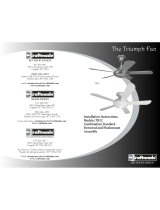 Craftmade Triumph TR52 Installation Instructions Manual
Craftmade Triumph TR52 Installation Instructions Manual
-
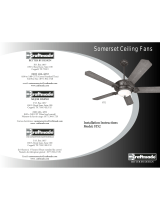 Craftmade Somerset ST52 Installation Instructions Manual
Craftmade Somerset ST52 Installation Instructions Manual
-
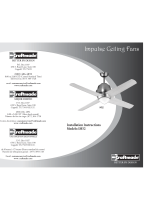 Craftmade Impulse IM52 Installation Instructions Manual
Craftmade Impulse IM52 Installation Instructions Manual
-
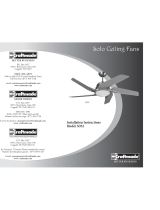 Craftmade Solo SO52 Installation Instructions Manual
Craftmade Solo SO52 Installation Instructions Manual
-
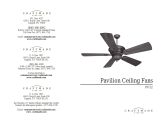 Craftmade Pavilion PV52 Manuel utilisateur
Craftmade Pavilion PV52 Manuel utilisateur
-
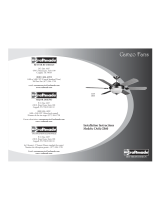 Craftmade Cameo CB60 Installation Instructions Manual
Craftmade Cameo CB60 Installation Instructions Manual
-
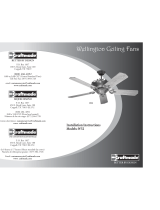 Craftmade Wellington W52 Installation Instructions Manual
Craftmade Wellington W52 Installation Instructions Manual
-
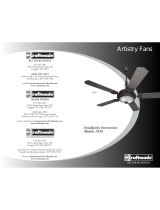 Craftmade Artistry AY56 Installation Instructions Manual
Craftmade Artistry AY56 Installation Instructions Manual
-
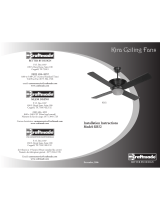 Craftmade Kira KR52 Installation Instructions Manual
Craftmade Kira KR52 Installation Instructions Manual
-
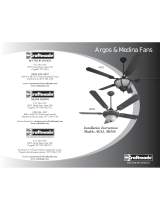 Craftmade Argos AG52 Installation Instructions Manual
Craftmade Argos AG52 Installation Instructions Manual

































